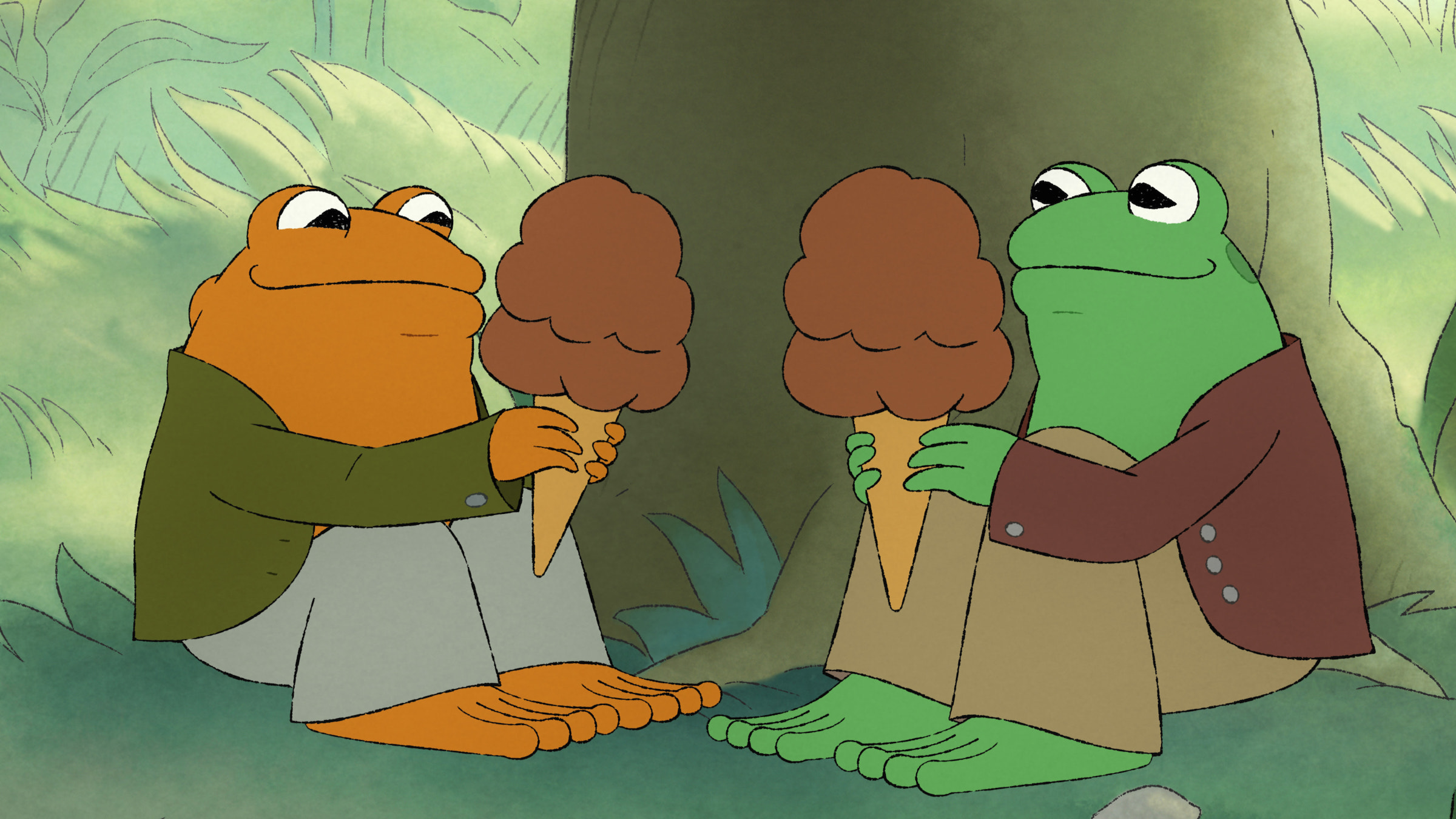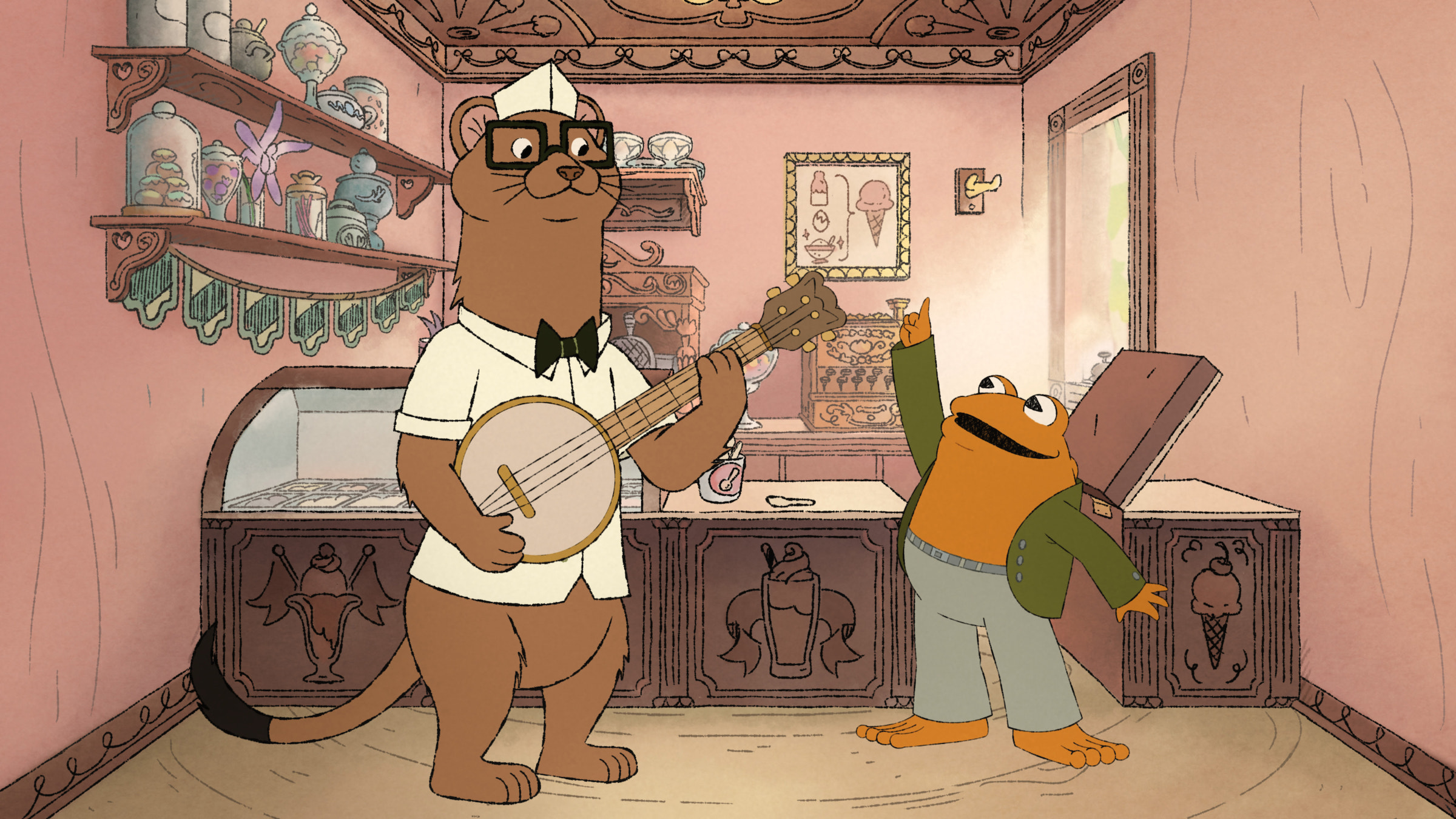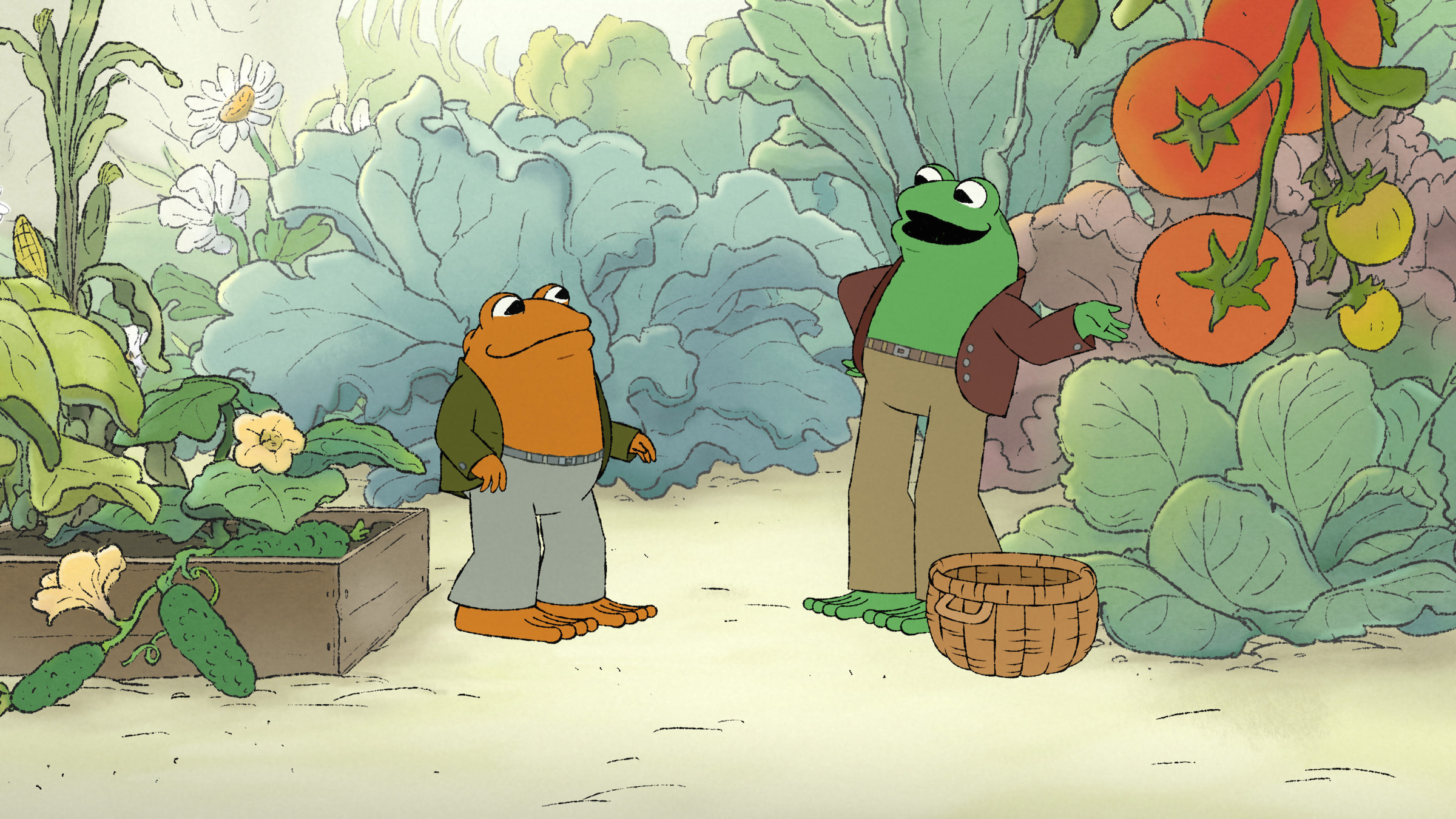Some things just belong together: Salt and pepper. Peanut butter and jelly. Frog and Toad. The eponymous dynamic duo, created by children’s book author and illustrator Arnold Lobel, first hopped onto pages in 1970 with Frog and Toad Are Friends, earning a Caldecott Honor, a top illustration award. Over the next decade, Lobel wrote and illustrated three more collections of five short stories, equal parts poignant and droll: Frog and Toad Together (a Newbery Honor Book), Frog and Toad All Year, and Days With Frog and Toad.
Now, the beloved pair is entering a new era with Frog and Toad, an animated series of eight episodes, each containing two stories, debuting April 28 on Apple TV+. Of the 16 short stories on screen, six are new additions, and the rest were adapted from the books.
The series is executive produced by Lobel’s children, Adrianne and Adam Lobel, who hope the show will reintroduce new audiences to their father’s work, which includes many other books, like the Mister Muster series, Prince Bertram the Bad, Giant John, Owl at Home, and Fables. For the generations that grew up on them, Frog and Toad are classics steeped in nostalgia. But children watching the show now might be discovering the amphibians for the first time.
“When he was towards the end of his life, when he didn’t have much more time, he’d say to me, ‘Look for me in the books. I’m in there,’” Adam tells TIME. “I told my daughter that. I said, ‘Yeah, this is him. Read these stories, you’ll know him about as well as I did.’”

No matter the format, Frog and Toad are forever
It’s hard to put a webbed finger on what, exactly, makes Frog and Toad so timeless. The main characters and their adventures are delightful to be sure, but it’s the dynamic between Frog and Toad that stands out. Frog is chipper and easygoing, whereas Toad is more serious and pessimistic (though just as caring). Writer Bert Clere postulated for The Atlantic that they represent two sides of the same identity: “Frog represents the practical and sensible part of the self, while Toad is emotional and tempestuous.” Lobel even claimed them as “really two aspects of myself.”
“Their relationship is so funny,” Adrianne says. “It reminds everybody of their own marriages and friendships. They’re The Odd Couple. They’re Walter Matthau and Jack Lemmon.”
And the stories involving Frog, Toad, and the woodland creatures they encounter satisfy on several levels. Take, for example, “Ice Cream,” a delicious tale from Frog and Toad All Year. In the book, Frog and Toad are sitting by a pond on a hot summer day. “I wish we had some sweet, cold ice cream,” says Frog. And off Toad goes to the ice cream store, where he buys two chocolate ice cream cones (their favorite), and tries his best to bring them back. Except it’s too hot: The ice cream melts all over Toad, and the cones stick to the top of his head, creating the illusion of horns.
A mouse, a squirrel, and a rabbit all briefly warn Frog about the big, brown monster headed his way. “Good heavens!” says Frog. “That thing is Toad!” Toad falls into the pond and the ice cream washes away, but all’s well that ends well: The friends run back to the store, buy two new cones, and eat them contentedly in the shade. It’s a sweet metaphor, perhaps, about tenacity—but also, as Lobel always made Frog and Toad, about the value of friendship.
“That was what his brilliance was,” Adrianne says, “in making these tiny stories so absolutely complete.”
The TV show brings “Ice Cream” alive while preserving the whimsical heart and tone of the story. The pond is beautifully illustrated, replete with purple-flowered lily pads. We meet Mouse, sipping water from a clover, Squirrel, enjoying a cone of his own, and Mink, the ice cream shop proprietor. In the book, we catch a glimpse of a thumbnail-sized ice cream shop, just the edge of an awning. On screen, the shop fits neatly into the aesthetic, built into the base of a tree trunk, mushrooms climbing its walls.

Inside, as Toad (Kevin Michael Richardson) struggles to choose a flavor, Mink (Tom Kenny), sporting a retro diner hat, breaks into song. “We’ve got raspberry, strawberry, huckleberry, ground-cherry, peanut butter, coconut, rocky road and Fluffernutter, bubblegum, wild plum,” he sings. “Try the peach, I’ll give you some! Triple ripple choco-cicle, pumpkin spice and lemon slice, custard cream, mangosteen, jelly bean! And vanilla.”
It’s an earworm song—one that’s easy to imagine kids requesting again and again.
How Frog and Toad made it to TV
Before landing on the show, the siblings had considered making Frog and Toad into a feature film. Adrianne previously commissioned a Broadway musical about the characters, called A Year with Frog and Toad. But they worried about their father’s involvement being forgotten and Frog and Toad meeting a similar fate as Shrek—the popularity of the movie Shrek has largely eclipsed the children’s book it’s based on, Shrek! by William Steig. To the siblings, the smaller format of TV feels more true to the books; each short story is already a self-contained episode.
“They’re little stories,” says Adam. “They’re not big, swashbuckling adventures. They may be universal concepts, but they’re little.” (Some may argue that one original story in episode 3, “Dragons and Giants,” is, in fact, a swashbuckling adventure, but the point still holds.)
Adam says he is frankly amazed that the creative team—including head writer and executive producer Rob Hoegee—managed to craft 11 minutes of animation out of each roughly 12-page story. Their father loved animation—he dragged Adrianne to see Bambi when she was 2 (too young) and Adam to see Pinocchio when he was 14 (too old)—and Adam thinks he would have been happy to see his creatures in moving form.

Arnold Lobel was quite a private person, but four years after the first Frog and Toad book was published, he came out to his family as gay. In 2016, Adrianne told the New Yorker that Frog and Toad are “of the same sex, and they love each other. It was quite ahead of its time in that respect. I think Frog and Toad really was the beginning of him coming out.”
“I know Frog and Toad started as a male and female, way, way, way back in the beginning,” Adrianne says. “And I think it’s good they’re not. I think they’re better off as two guys, as being friends.”
“It was very different times,” says Adam. “Who knows what would be going on if it were today?”
Frog and Toad have a Bert and Ernie dynamic: a close, emotionally intimate relationship. And Arnold Lobel, for his part, loved vaudeville comedy duos, says Adrianne: Bing Crosby and Bob Hope, Laurel and Hardy, or the dynamic between Fred Astaire and his comedic foil Edward Everett Horton. No matter what, exactly, Frog and Toad are to each other, to the world they remain a cherished portrait of lifelong friendship.
More Must-Reads from TIME
- Why Biden Dropped Out
- Ukraine’s Plan to Survive Trump
- The Rise of a New Kind of Parenting Guru
- The Chaos and Commotion of the RNC in Photos
- Why We All Have a Stake in Twisters’ Success
- 8 Eating Habits That Actually Improve Your Sleep
- Welcome to the Noah Lyles Olympics
- Get Our Paris Olympics Newsletter in Your Inbox
Contact us at letters@time.com
